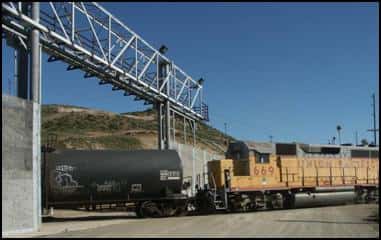Southern Barrier
The United States’ border with Mexico is nearly 2,000 miles long. Over that vast distance the protective barriers between the two countries vary greatly. It may be interesting to note that nowhere along the entire border has Mexico installed any barrier of its own. All the barriers between the countries have been paid for by the U.S. Taxpayer.

One of the most dangerous border areas in the world is between San Diego, California, USA, and Tijuana, Mexico. Here we see a Union Pacific train passing through the massive barrier at the San Ysidro Port of Entry.
The barrier systems along the border vary greatly. In the urban areas these barriers may be doubled to include a Secondary
barrier with a No Man’s Land
between. In some of the more violent areas populated by violent gangs or drug cartels, the barrier has been improved with a third obstacle — usually another fence. Here is a PDF document on the border barriers.
The Primary
or most southern barriers are comprised of the following types:
- Nothing.
- Three-wire cattle fence.
- Vertical railroad rail.
- Horizontal railroad rail with 6″ drill stem uprights.
- Concrete-filled thin-wall six-inch steel tubes of staggered height.
- Corrugated-steel plate.
- Perforated corrugated-steel plate (landing mat).
- Square tubing.
- Crushed cars.
The Secondary
barriers are comprised of the following types:
- Climb-proof expanded metal fence.
- Climb-proof chain link fence.
- Concrete column or
Bollard
barrier.
